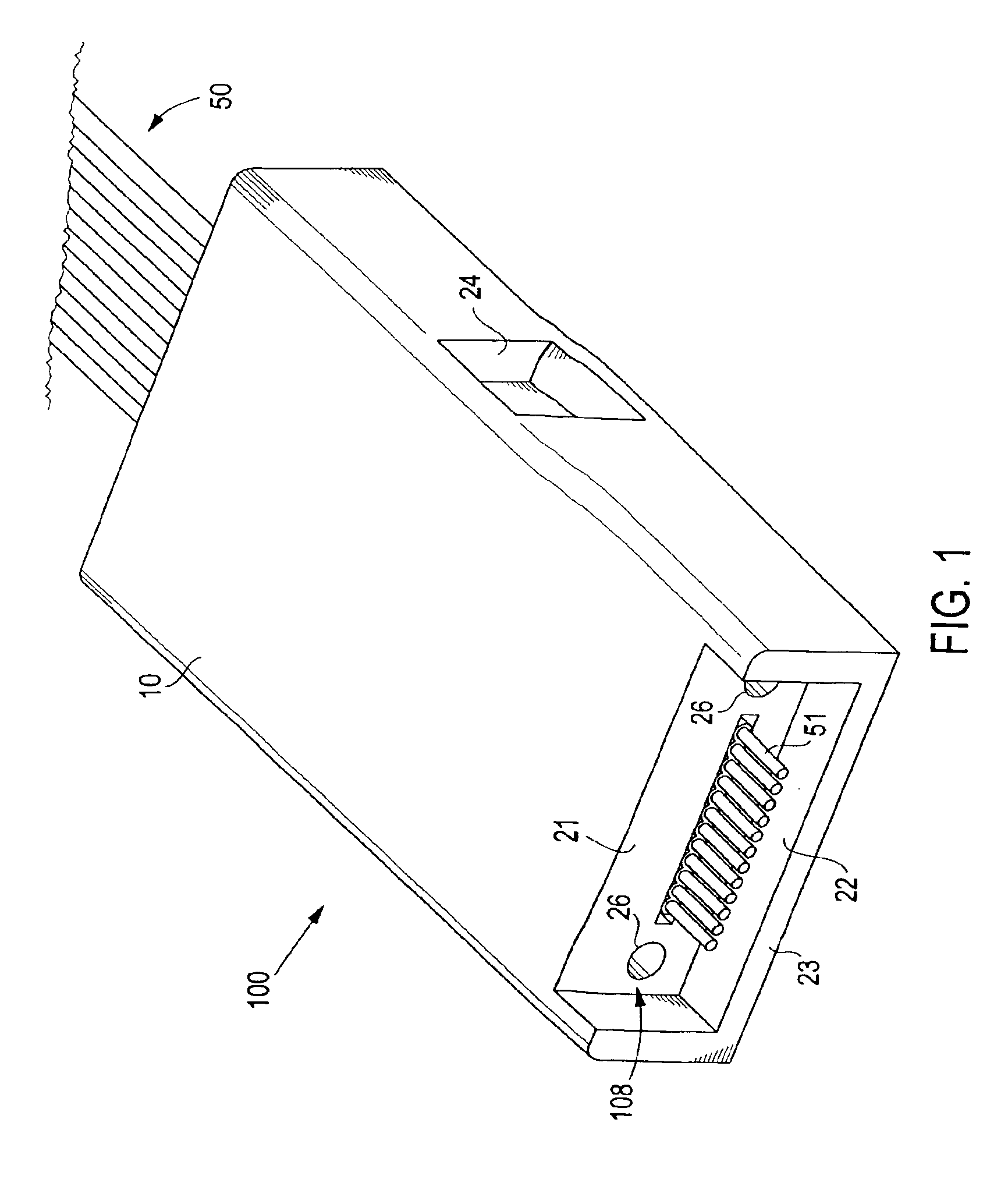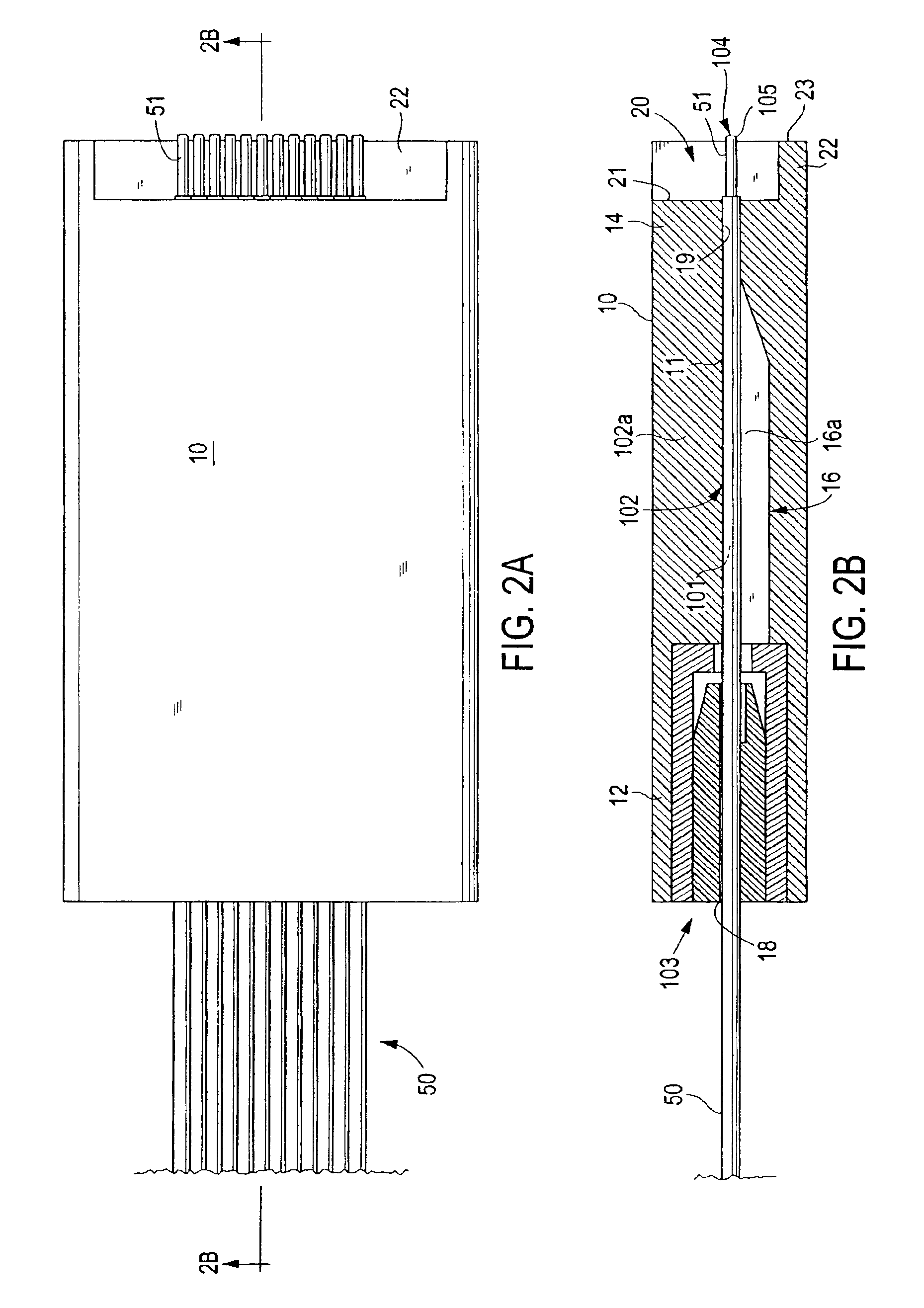Optical ferrule-less connector
a technology of optical connectors and ferrules, applied in the field of optical connectors, can solve the problems of reducing yield, reworking and waste, and high cost of polishing with such stringent requirements
- Summary
- Abstract
- Description
- Claims
- Application Information
AI Technical Summary
Benefits of technology
Problems solved by technology
Method used
Image
Examples
Embodiment Construction
[0028]The present invention provides for an optical ferrule-less connector having enhanced control over the fibers it contains during the mating process to ensure a reliable and repeatable physical contact (“PC”) between the fibers of the connector and the optical pathways of a mating optical structure. The term “optical pathway,” as used herein, refers to any medium for conducting optical signals including the following: a fiber or waveguide; a silica or polymeric structure in a substrate; or a silica or polymeric optical component. The term “mating component” refers to an optical package that contains or comprises the optical pathway. For example, a mating component may be another connector, herein a “mating connector” or it may be an optical device in which the mating optical pathway is an integral component. Examples of optical devices include passive devices, such as, add / drop filters, arrayed wave guide gratings (AWGs), splitters / couplers, and attenuators, and active devices, ...
PUM
 Login to View More
Login to View More Abstract
Description
Claims
Application Information
 Login to View More
Login to View More - R&D
- Intellectual Property
- Life Sciences
- Materials
- Tech Scout
- Unparalleled Data Quality
- Higher Quality Content
- 60% Fewer Hallucinations
Browse by: Latest US Patents, China's latest patents, Technical Efficacy Thesaurus, Application Domain, Technology Topic, Popular Technical Reports.
© 2025 PatSnap. All rights reserved.Legal|Privacy policy|Modern Slavery Act Transparency Statement|Sitemap|About US| Contact US: help@patsnap.com



